Understanding Terpenes: What is Pinene?

- 1. What is pinene?
- 2. Where can you find pinene besides cannabis?
- 3. What are pinene's properties?
- 3. a. Pinene for anti-inflammation and pain relief
- 3. b. Pinene as antimicrobial
- 3. c. Pinene's neuroprotective and antioxidant uses
- 3. d. Pinene for anxiety and depression
- 3. e. Pinene for preventing cancers
- 4. What are pinene's uses?
- 5. Which strains contain pinene?
- 6. The bottom line
As fancy and scientific as the word terpenes may sound, and even if you were not aware of it, we all know what terpenes are, we just didn't know the dictionary's definition.
Terpenes are the ones responsible for giving aroma and taste to everything found in nature, from trees to flowers and fruits. But most importantly, terpenes are the ones to give each cannabis strain its specific taste, flavor, and some of the active properties.
There's a vast variety of cannabis terpenes, such as pinene, one of the most common terpenes found in weed buds which you've probably already come across with. Wait, are you talking about that pine, woody aroma? Yes, my friend, that's pinene.
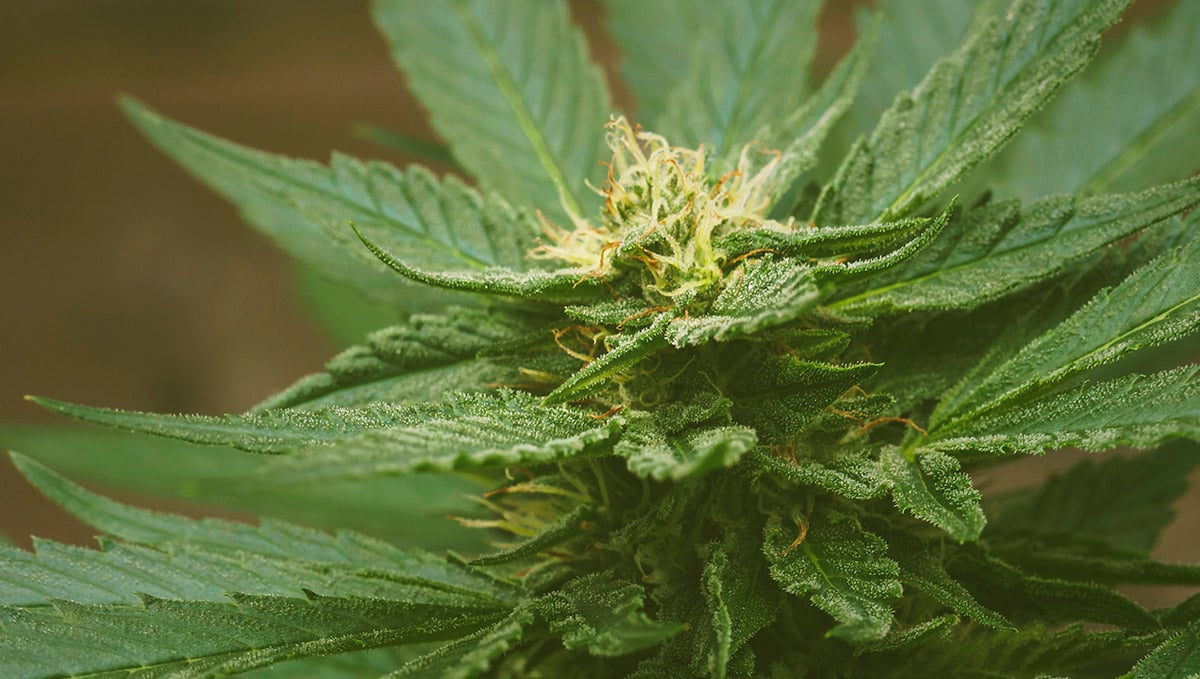
1. What Is Pinene?
Just like all of the other terpenes, pinene is produced in weed buds' trichomes, those shiny transparent mushroom-looking glands, where other cannabinoids such as THC and CBD develop as well. While they originally appeared to disguise the plants from predators in their natural habitats, terpene compounds offer a big variety of benefits for us humans.
Pinene (pie-neen) per case, is the terpene characteristic of that feeling of a forest you sometimes get (depending on the strain) as you puff a joint or hit your bong. Most likely it developed as a camouflage resource from insects for cannabis plants situated in forested areas.
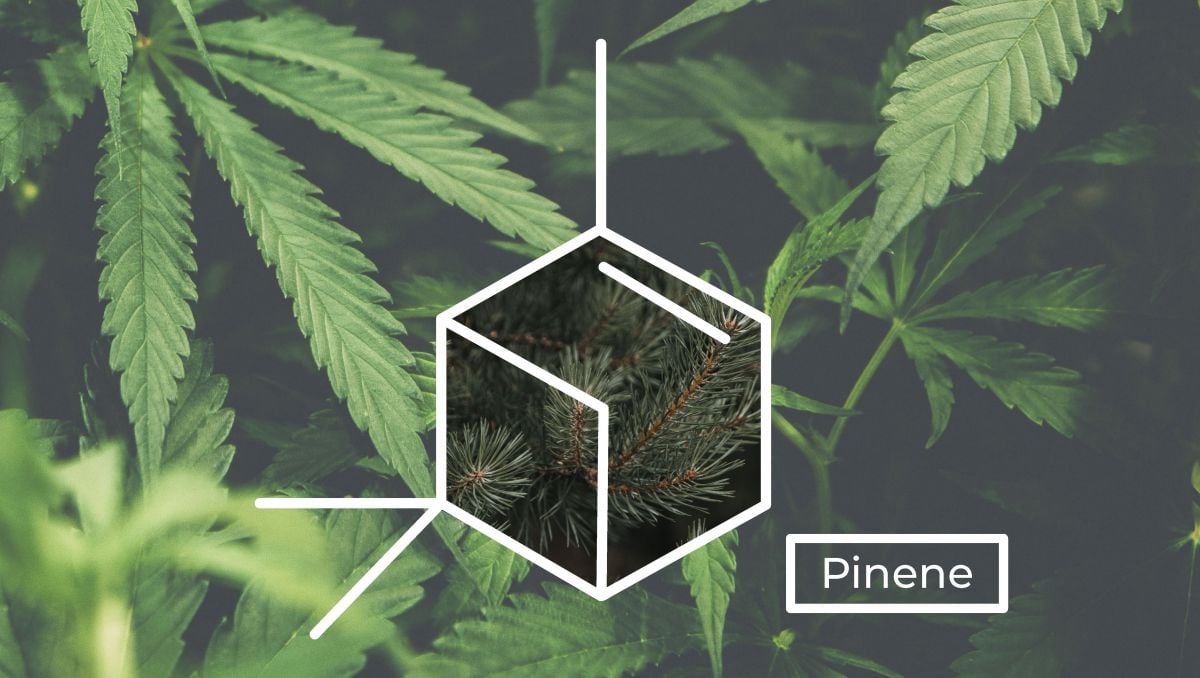
There are two different forms of pinene: alpha-pinene and beta-pinene. Normally, alpha-pinene is the terpenoid that prevails the most in nature and in cannabis as well.
2. Where Can You Find Pinene Besides Cannabis?
Apart from cannabis, you can find pinene the different types of terpenes in basil, dill, rosemary, parsley, and in the essential oils these plants yield. Pinene is also found in nature's trees that are cone-shaped, categorized as coniferous trees, i.e. pine trees and cedars.
| Type of pinene | Sources | Smell and Flavor | Uses | Vaporization point at |
|---|---|---|---|---|
| Alpha-pinene | Rosemary, conifers, basil, orange peels | Piney, woody, herbal | Anti pain and inflammation; bronchodilator; anti-anxiety; neuroprotection. Insects repellent | 155°C |
| Beta-pinene | Pine, cumin, hops | Cooling, woody, piney, spicy, minty | Antidepressant and anxiolytic; preventing cancer. Insects repellent, fragrances, biofuel | 166°C |
You can also find pinene in pine nuts, which contain pinene oil, and so do orange and lime peels. Since insects find pinene quite disgusting, pinene is often used as an ingredient for making repellents.
3. What Are Pinene's Properties?
Pinene terpenes are not only responsible for adding earthy, foresty, woody flavors to your cannabis buds but it also comes along with several health benefits, such as:
- Relieving pain and inflammation;
- Preventing cancer;
- Functioning as an antimicrobial;
- Bronchodilating;
- Helping with anxiety and depression, and more.
Let's go through pinene's properties in detail.
Pinene For Anti-Inflammation And Pain Relief
Some studies made both on animals and humans found that pinene is an effective inflammation treatment. Not only those pinene terpenes found in cannabis but the ones in essential oils as well.1
Furthermore, another study found that the aromatic compound could also join sunscreen as an aid to prevent skin inflammation caused by UV light.2
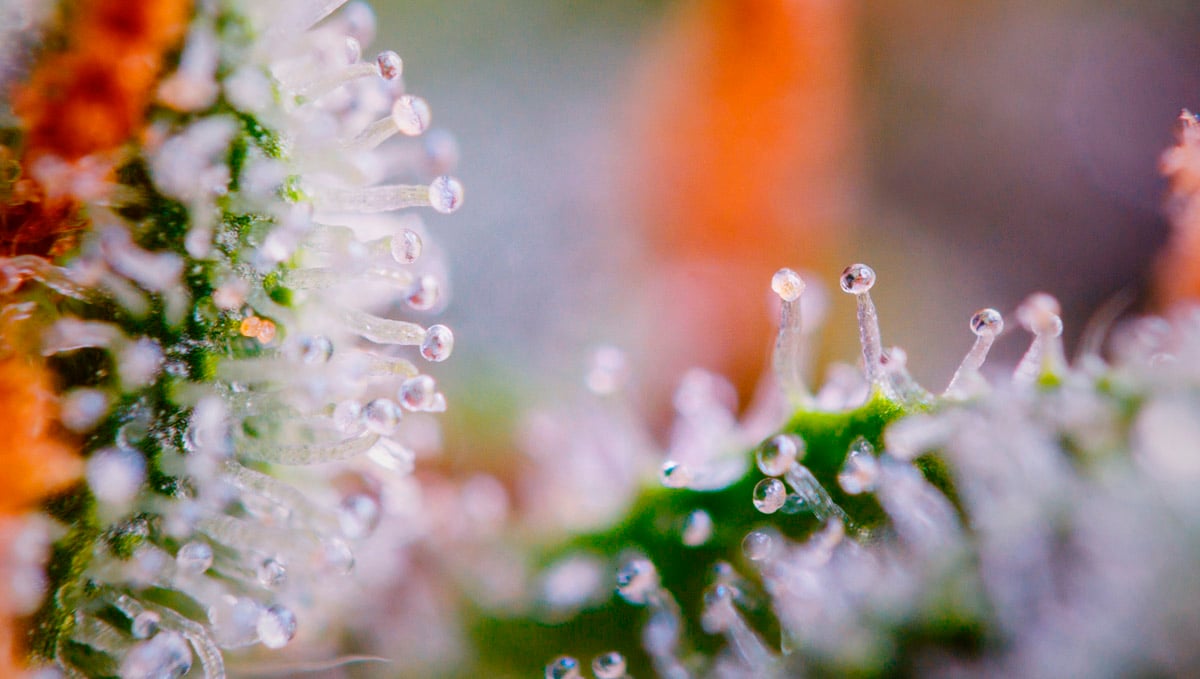
Concerning pain relief, studies have also found that beta-pinene has mood-stabilizing and antimicrobial properties, aiding relief for both pain and inflammation. Pinene was found to be effective in easing pain caused by some types of cancers, MS, and arthritis. It also counteracts some short memory loss caused by THC.
Pinene As Antimicrobial
One big property of pinene terpenes is their antimicrobial and antifungal effects. A study posted in Molecules in 2012 was set to analyze the terpene on several microbial families. 2
Results found pinene to be highly poisonous to Candida albicans, which is the causing fungus for yeast infections. Furthermore, by consuming this terpene you could also prevent methicillin-resistant Staphylococcus aureus, MRSA, which is a group of bacteria immune to most antibiotics.
Combining pinene with the antibiotic ciprofloxacin, the terpene boosts the antibiotic activist, aiding to get rid of these potentially dangerous MRSA bacteria.
Pinene's Neuroprotective and Antioxidant Uses
Antioxidants are substances that slow down the aging of the human body. A study led in 2018 found that pinene has strong antioxidant effects that could aid in neuroprotection for diseases such as Parkinson's and Alzheimer's.
The terpene has a two-fold antioxidant effect. In the first place, it slows down the production of harmful molecules called reactive oxygen species (ROS), which 'oxidize' us, a.k.a. make us old, hence the antioxidant part. It's as if us humans were weed buds, as we age, through decarboxylation with sun, time, and oxygen, we cure and get older.
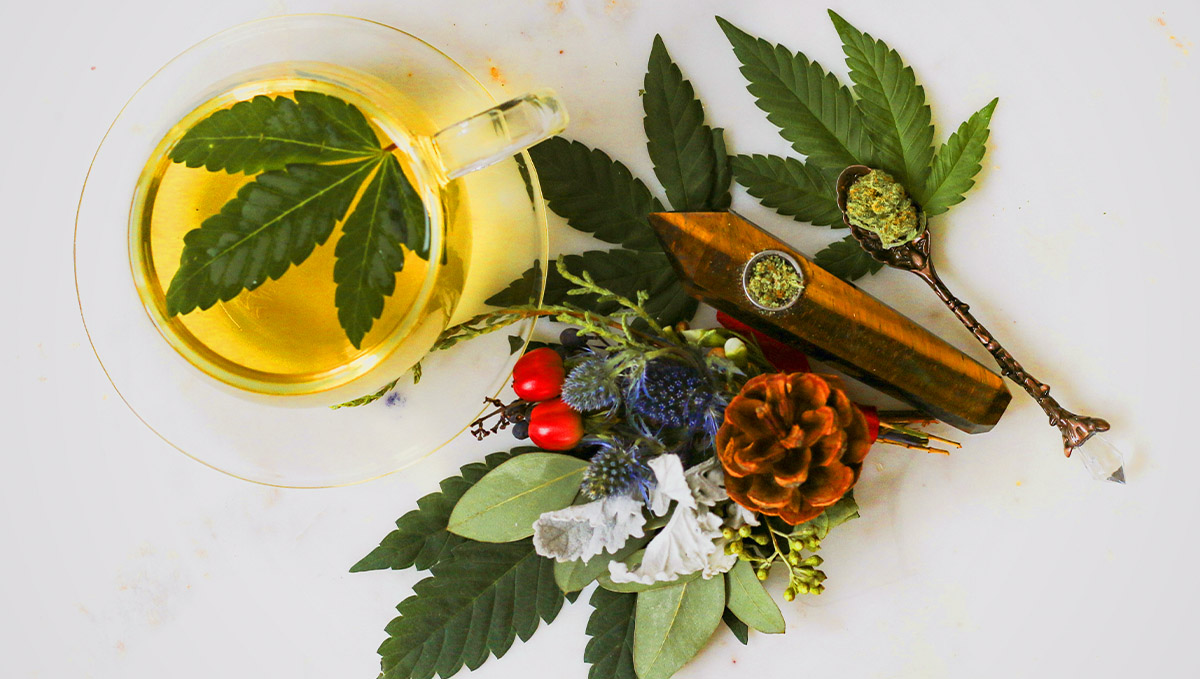
Secondly, pinene enhances the expression of several natural antioxidant chemicals, for example, catalase, or CAT; superoxide dismutase, or SOD; glutathione reductase and peroxidase, GR and GPx; and heme oxygenase 1, or HO-1.
The study's researchers suggested that pinene could slow down or prevent the development of neurological diseases by providing a balance within the nervous system's oxidant/antioxidant balance.
Pinene For Anxiety And Depression
Marijuana is normally prescribed for patients struggling with depression or anxiety to lift up their mood. A study in 2015 stated that beta-pinene when combined with linalool, another terpene, produces similar effects to those of antidepressant treatments.3
Pinene For Preventing Cancers
Several studies have concluded that the combination of both alpha and beta-pinene has notorious anti-tumor properties. Both varieties of pinene seem to compliment each other with a positive synergistic effect in reducing tumors.
At the same time, alpha-pinene could effectively treat prostate cancer, found a study performed on rats in 2018, no, there is no escape to the animal testing.
4. What Are Pinene's Uses?
Besides its medical purposes, pinene is used most commonly in insect repellents and for adding flavor or scent to certain fragrances and foods. Those pine tree-shaped fragrances for hanging in cars? Probably have pinene inside.
Have you ever tried orange peel candy? Or dressed a dessert with some grated lemon peel? Well, there were you enjoying lots of pinene terpenes. These two ingredients are high on pinene oil content. Perhaps you've had some pine nuts as a snack, well pinene oil there as well.

Surprisingly, pinene is also being studied for its potential use as biofuel in spark-ignition engines. This is because when two identical pinene molecules get linked together, what's known scientifically as a pinene dimer, they may generate volumetric heating values which could classify as rocket fuel.
While pinene can be found naturally, scientists at the Georgia Institute of Technology and the Joint Bio-Energy Institute were also able to produce the terpene synthetically by experimenting with bacteria.
5. Which Strains Contain Pinene?
Pinene is one of the most common terpenes found in cannabis plants. You can find big amounts of it in our Fast Buds strain Pineapple Express, a strong hybrid with tropical, sweet flavors, fruity, and sour hints of pineapple.
6. The Bottom Line
Marijuana is full of colors and patterns up to a gourmet level. In weed flowers, you can find infinite hues and flavors as if you were tasting wine or a chef's most elaborate recipe.
For us, weed affectionates, it's important to learn about our taste in cannabis and what to search for when preparing to germinate seeds. To have control over your future buds' flavor, it's essential to know the variety of terpenes out there and the characteristics of each of them.
If you're more of a foresty, woody, or rustic personality then definitely look for pinene dominant strains.
EXTERNAL REFERENCES
- "Alpha-Pinene Exhibits Anti-Inflammatory Activity Through the Suppression of MAPKs and the NF-κB Pathway in Mouse Peritoneal Macrophages" Dae-Seung Kim, Hyun-Ja Lee, Yong-Deok Jeon, Yo-Han Han, Ji-Ye Kee, Hyun-Jeong Kim, Hyun-Ji Shin, JongWook Kang, Beom Su Lee, Sung-Hoon Kim, Su-Jin Kim, Sang-Hyun Park, Byung-Min Choi, Sung-Joo Park, Jae-Young Um, Seung-Heon Hong. June 2015.
- "Alpha pinene modulates UVA-induced oxidative stress, DNA damage and apoptosis in human skin epidermal keratinocytes" Ramasamy Karthikeyan, Govindasamy Kanimozhi, Nagarajan Rajendra Prasad, Balupillai Agilan, Muthusamy Ganesan, and Gunaseelan Srithar. November 2018.
- "Biological Activities of α-Pinene and β-Pinene Enantiomers" Ana Cristina da Silva Rivas, Paula Monteiro Lopes, Mariana Maria de Azevedo Barros, Danielle Cristina Costa Machado, Celuta Sales Alviano, and Daniela Sales Alviano. June 2012.
- "Linalool and β-pinene exert their antidepressant-like activity through the monoaminergic pathway" Silvia Laura Guzmán-Gutiérrez, Herlinda Bonilla-Jaime, Rocío Gómez-Cansino, and Ricardo Reyes-Chilpa.








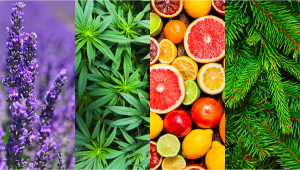



Comments